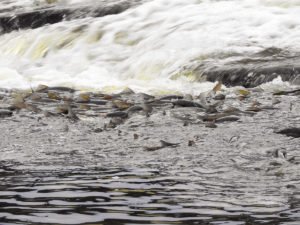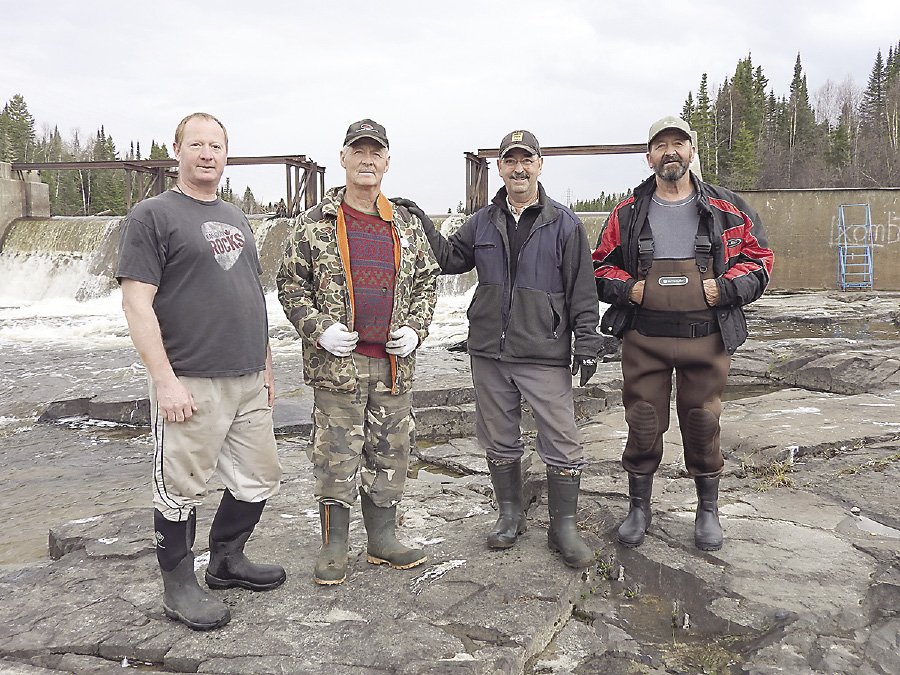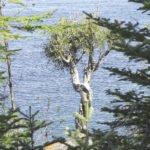Every spring, along a stretch of the Black Sturgeon River northeast of Thunder Bay, it gets crowded.
As spring water temperatures rise, schools of fish funnel into the river’s mouth at Lake Superior’s Black Bay to make their annual pilgrimage up this inland waterway. For 16 kilometres the fish migrate freely, until they come to a stop at a 53 metre-long concrete wall.
Constructed around 1960 to drive raw timber downstream for the logging industry, Camp 43 Dam was later modified to control the movement of invasive sea lamprey, which decimated native fish populations throughout the Great Lakes in the first half of the 20th century. At the same time, the structure cut off access to upstream spawning habitat formerly available to migratory fish.
The aging dam, which no longer meets provincial safety standards, was the subject of a draft environmental study in 2017. Over the decades, debate over its removal or repair has drawn polarizing views among locals and special interest groups.
Organizations like the Ontario Federation of Anglers and Hunters fear that removing the dam opens the gates for invasive sea lamprey migration further upstream, while others argue that native fish populations would be given the opportunity to bounce back. Prior to the dam’s construction (and other contributing factors like over-fishing and habitat loss), Black Bay once supported the largest population of walleye in Lake Superior until their stocks collapsed in 1968.

Meanwhile, as the fish gather at the base of the dam, Philip McGuire is standing with them.
Clad in a pair of gumboots, he is joined by his son and brothers who spend the first weeks of spring netting hundreds of fish to carry over the dam.
“When we were kids, we were at the river all the time,” recalls McGuire, now 72. As a lifelong resident of the Nipigon-Red Rock area, he remembers his childhood days when the Black Sturgeon River flowed freely. “People put the dam in there without any regard of the consequences.”
Until he received his Indigenous status card, McGuire couldn’t do anything to help fish and amphibians move further upstream. With that in hand, his team carried about 500 walleye and 24 lake sturgeon, in addition to speckled trout, bass, frogs, minnows and tadpoles, over the dam last year.
“Whatever I see is going over,” says McGuire, noting that he hasn’t picked up a single sea lamprey. His efforts are more than moving fish upstream, he tells me over a cup of coffee. It’s about moving food.
McGuire describes rivers as lifelines—arteries to the interior of the forest—carrying fish and their eggs, which provide valuable nutrients to support life further up the food chain.
“I know what it was like before they put the dam in, and I want it to come back to the way it used to be.”

This spring will be their fourth year carrying fish over the dam, and already McGuire says he is seeing results.
“I’m sure some of them are multiplying,” he said. “What I saw last spring were lots of little wee pickerel [walleye], and I even saw two little baby sturgeon. I’ve never seen that up there before. When I first started throwing fish up there, they were all big ones.”
McGuire and his team are starting to track fish this year, realizing that the fish they have carried can always pass through the dam and end up downstream again.
“Am I catching the same ones? I don’t know that,” he said.
The Ministry of Natural Resources and Forestry has yet to decide what it will do with Camp 43 Dam. In the meantime, McGuire will return to the Black Sturgeon River each spring to mend the break in the cycle.




